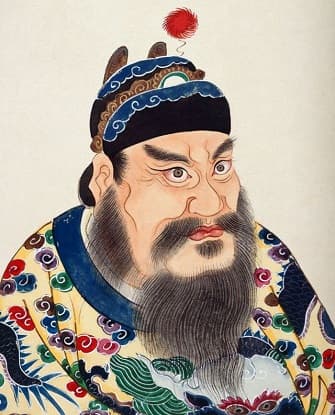Introduction
The Warring States period of ancient China saw six powerful states fighting to see who would control China; in 221 BC the state of Qin emerged victorious and a unified China was formed under the Qin Dynasty. Unlike most of the great dynasties of ancient China this dynasty would not last long; in fact where most dynasties lasted centuries the Qin Dynasty lasted only 15 years. Although its dominance over China was short lived it brought a great amount of change to this region of the earth. Below you will find a list of interesting information about this dynasty and how it influenced the history of China.Click here for a great selection of Amazon.com books about the Qin Dynasty.
Qin Dynasty Quick Facts
- This dynasty lasted from 221 BC to 206 BC.
- The Qin Dynasty had a population of approximately forty million people.
- There were two emperors during this dynasty; the first emperor Qin Shi Huang and later his son Huhai (Qin Er Shi).
Interesting Qin Dynasty Facts
- It is believed that China derived its name from the name Qin which is pronounced "Chin".
- During the Qin dynasty construction began on a wall to protect the empire from nomadic Mongols in the north. Later dynasties continued construction on what was to become the Great Wall of China.
- After the death of this dynasty's first emperor, Qin Shi Huang, rebellions broke out and the Qin dynasty only lasted four more years.
- During the Qin dynasty laws, weights, measures, and money were all standardized.
- Religion during the Qin dynasty centered on the beliefs in Shen and yin. Shen refers to the human spirit and yin is the forces of darkness or shadows.
- A power struggle for control of China took place after the collapse of the Qin Dynasty. A peasant named Liu Bang who was a rebel leader defeated another rebel by the name of Xiang to become the next emperor of China and ushered in the Han Dynasty. Where Qin Shi Huang had been extremely cruel Liu Bang, known as Emperor Gaozu, treated the people more fairly.
Facts about Emperor Qin Shi Huang
- There were only two emperors during the fifteen years of the Qin Dynasty. Qin Shi Huang was the First Emperor of Qin and the first person to have power over all of China. Upon his death in 210 BC his son Huhai (Qin Er Shi) became emperor.
- The first emperor of this dynasty was a harsh ruler and attempted to maintain absolute control over all the men, women and kids in his empire. Anyone who dared mention even the slightest disapproval over how things were being run faced immediate execution. He practiced the philosophy of Legalism which demanded absolute obedience to his laws.
- The brutal reign of the Qin Dynasty's first emperor, Qin Shi Huang, did succeed in insuring his power; there were no rebellions during his reign.
- Qin Shi Huang did not think his cruel and demanding treatment of the people was wrong. He believed that strict control was necessary for the dynasty to succeed and flourish. He is known to have said "A thousand may die so that a million may live"; and indeed during his rule China did accomplish great things. During his reign numerous public works including canals, buildings, roads and bridges were completed many of which saved countless lives from starvation and flooding.
